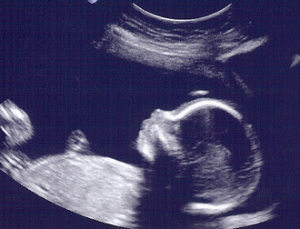 Most people already know that the one-child policy in China has caused a lot of sex based selection in children, causing an very lop-sided ratio of males to females in China. The United Nations estimates, there should be 40 million more women and girls living in China than the current figures indicate. Technology, abortion, giving up girls for adoption, have all contributed to this, along with the Chinese cultural traditions that foster a mistaken belief that boys are more desirable than girls. This same preference for sons, occurs in other Asian cultures as well, but of course this phenomenon hasn’t caused as pronounced gender imbalance as what we’re seeing in China.
Most people already know that the one-child policy in China has caused a lot of sex based selection in children, causing an very lop-sided ratio of males to females in China. The United Nations estimates, there should be 40 million more women and girls living in China than the current figures indicate. Technology, abortion, giving up girls for adoption, have all contributed to this, along with the Chinese cultural traditions that foster a mistaken belief that boys are more desirable than girls. This same preference for sons, occurs in other Asian cultures as well, but of course this phenomenon hasn’t caused as pronounced gender imbalance as what we’re seeing in China.
A thesis generated at the University of Texas speculated that immigrants from cultures where sex selection occurs may retain their preferences for a son or daughter when they emigrate. A 2005 study using U.S. census data did find some evidence that Chinese-American and South Asian-American families select for sons.
This topic also became a focus of a recently published study in Canada. The study used test families with two girls and looked at the gender of the third child. In nature, without the intervention of sex based selection, about 1.05 boys are born for every girl. In the study with groups of Chinese, Korean and Vietnamese Canadian families, the third child was a boy 1.39 times more often than a girl. The difference is pronounced enough to be outside of what could be considered a normal variance.
But there’s more to this story after the jump.
This is where numbers get interesting. You might get the mistaken notion from this study alone that there are missing Asian women in Canada. A professor at Carleton University, Frances Woolley, actually looked into the population numbers for Chinese Canadians to see if the discrepancy existed in the population at large, and even excluding adopted Chinese girls from China, the ratio of Chinese male children to female children is about 105.15 males to females. Based on these numbers, she concluded that in fact there was no preference in the Chinese community in Canada. Her conclusion:
The Canadian experience suggests that missing women are not an inevitable product of Chinese culture. Any preference for sons weakens considerably when people have education, the freedom to have more than one child, and economic reasons to value daughters.
It’s good to know we value our daughters in America (believing as I do the demographic in Canada is probably very similar to that in the United States).
As an immigrant Chinese father living in America, I have say when we planned on having our own child, I automatically thought we were having a baby boy. It was whatever in-grained Chinese cultural baggage I had brought along, even having grown up in the United States with two sisters. Of course I didn’t find out we were going to have a baby girl until the second ultrasound, the one where they can tell the gender and if the baby is in the right position, it’s almost 100% certain they’re right. With ours there was no doubt, we were having a girl. With that pronouncement, my entire world changed. My thinking changed almost immediately. While some party of me still thought about having a boy, I immediately and completely changed my view of what my life was going to be like.
My daughter is five now, and I can’t imagine not having her in my life. She’s changed every gender based belief or mis-belief I’ve ever held. If you had told me when I was twenty, I’d wake up every morning, brush my daughter’s hair and put her hair into braided ponytails, I’d tell you that you were crazy, since back then I had no idea how to braid hair, much less put it in ponytails. But she’s captured my heart, and she’s got me wrapped around her little finger. I can’t believe I ever even thought we were going to have a boy. I’m profoundly glad my daughter brought me and my beliefs into the twenty-first century and I certainly hope there are no missing Asian women in America.





